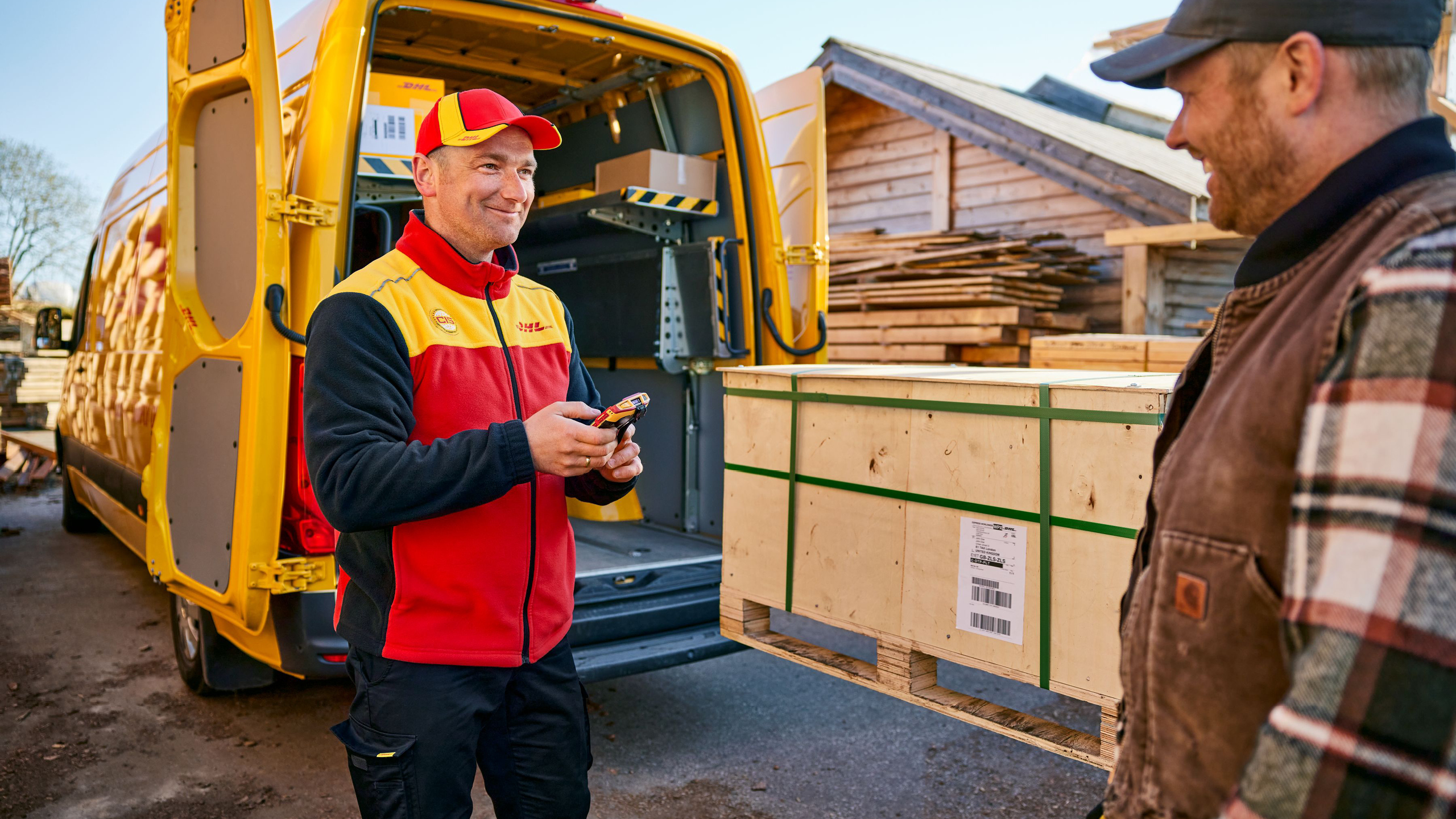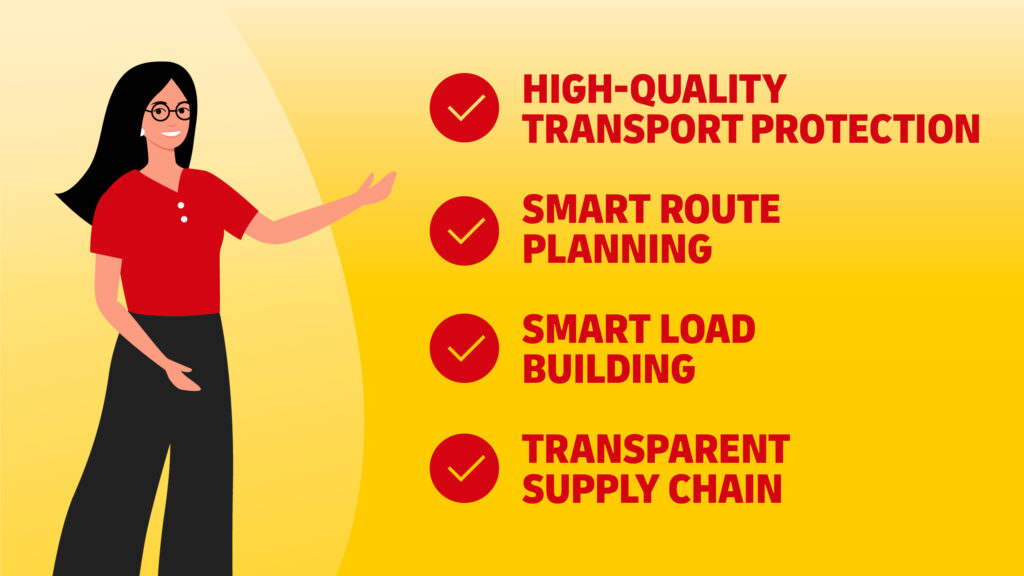
In distribution logistics, all players involved contribute to delivery quality: from manufacturers to (online) retailers, service partners in warehouse logistics and fulfillment, to transport logistics specialists. All participants in the value chain cooperate to minimize the number of complaints about deliveries and to ensure high delivery quality. This article provides tips for improving delivery quality.
Delivery Quality: Definition and Determinants
Delivery quality is defined as the ratio of deliveries that are not objected to the total quantity of deliveries.
The main reasons for complaints can derive from all parts of the supply chain:
- Products with manufacturing defects: Obviously, the manufacturer is responsible here.
- Wrong goods or wrong quantity of goods: This could be due to a mistake by the retailer or a fulfillment center.
- Damaged goods: Damage is mostly caused either by the transportation service provider or by improper storage.
- Delivery not on schedule: Early delivery is also not on time and can cause problems under certain circumstances. So it is not always a matter of quick delivery, but of precision. The carrier is not always responsible for late delivery. Delays may also occur, for example, when goods are being dispatched by the manufacturer, retailer, or warehouse logistics provider.
These primary reasons for recipient complaints result in three decisive factors that influence delivery quality:
- Condition of the delivered goods
- Delivery time
- Delivery accuracy
These three criteria can also be summarized with the term delivery reliability. Delivery reliability implies that the delivered goods comply exactly with the ordered goods, that they are in perfect condition, and that exactly the right quantity reaches the recipient at the agreed time.
Although not an inherent part of delivery quality, delivery costs are of course also essential. For recipients, low prices for delivery contribute significantly to a positive customer experience, which contributes to a high rating for delivery quality. And logistics providers, on the other hand, strive to keep delivery costs as low as possible through efficient processes.

Modern Consumer Behavior, New Influencing Factors
Another factor is playing an increasingly prominent role in today’s online trading: delivery flexibility. Customers change their delivery preferences at short notice: instead of to their home, they may prefer delivery to the office or to their in-laws. Nowadays, logistics service providers must respond to such requests so as not to jeopardize delivery quality.
Furthermore, delivery quality no longer ends when the goods are handed over. Even flawless goods may be rejected when recipients hold them in their hands for the first time. Or the customer has simply changed his or her mind. What matters now is high-quality returns management to ensure that customer satisfaction does not suffer after successful delivery.
Delivery Quality: Key Indicator for Calculation
Key performance indicators (KPIs) for the quality and efficiency of individual operational processes or business units are intended to objectively measure a company’s performance and to identify potential for optimization. The better the KPI, the better the performance. This can be evaluated based on KPI development.

The KPI for delivery quality is calculated like this:
delivery quality = number of objected deliveries ÷ total number of deliveries
Thus, the ideal KPI for delivery quality is 0 and the worst 1.
There are specific KPIs for each of the influencing factors that determine delivery quality and which have already been mentioned above. In our detailed article on KPIs in logistics, we have compiled for you how you can define and calculate the KPIs for delivery accuracy, delivery time, on-time delivery rate, and delivery costs.
Ways to Increase Delivery Quality
The respective approaches to reducing the KPI for delivery quality depend on your company’s position in the value chain.
Manufacturers and retailers can reduce the reasons for complaints with optimized quality control and work processes for inbound and outbound logistics. Complaints resulting from misunderstandings – such as incorrect clothing sizes or missing functions in technical devices – can be avoided through preventive returns management. This includes measures such as providing comprehensive product information with meaningful descriptions and true-color illustrations or high-quality advice.
For service providers in the transport logistics and fulfillment sector it is also crucial to have optimized processes for inbound and outbound logistics. A high standard of automation in warehouses significantly speeds up work steps such as consolidation and control. Modern warehouse technology prevents damage and speeds up outbound logistics. Smart use of available storage space and systematic prioritization during storage also contribute to this. There are separate warehouse management KPIs for all of these aspects. Good KPIs in warehouse logistics inevitably contribute to delivery quality.
The ultimate responsibility for delivery reliability lies with transport logistics: the delivery of undamaged goods at the agreed time.

When it comes to transport and final delivery, the most important factors are:
- High-quality transport protection so that the goods arrive undamaged.
- Smart route planning so that all recipients on the route receive their shipment as timely as possible.
- Smart load building: It contributes to the efficient use of cargo space and speeds up deliveries.
- A supply chain that is transparent and trackable for customers with flexible delivery options. This meets modern consumer needs.
This Is What Delivery Quality Is All About
High delivery quality = high customer satisfaction = high customer loyalty + readiness to recommend: This equation sounds simple, but in fact it is a major challenge for everyone involved in the supply chain. The best way to master this task is a high degree of cooperation. Smooth processes along the entire chain are crucial for delivery accuracy, delivery reliability, and delivery quality.
As DHL Freight and DHL Group, we want to be a reliable partner for better delivery quality. With our experience in transport logistics and our passion, your goods will reach their destination quickly, safely, and sustainably.



